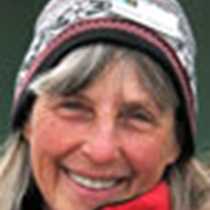Islas San Jose & San Francisco
At first light the National Geographic Sea Bird plied the waters between the island of San Jose and the escarpment of the Baja Peninsula on its approach of our morning destination. When the tide is high enough, as it was today, one can enter a narrow opening via kayak to explore hidden fingers of seawater sheltered by specialized trees known as mangroves. These habitats provide nutrients and hiding places for a vast array of marine life such as juvenile fish, mangrove oysters, sponges, and even an upside-down jellyfish! Kayaks are wonderful crafts. They allow for individual moments of discovery. One can enter narrow, clearings in the dense thickets to suddenly find a wider spot or a dead end. It is possible to simply stop to study the tiny fish darting among stilt-like roots of the red mangroves, or to paddle furiously to reach a more distant goal. Each kayaker investigated the quiet channels in his or her own way, and eventually all returned to the sandy beach where we had launched earlier. The wind had kicked up a bit, but our sturdy Zodiacs soon had us back to the ship for a tasty and welcome lunch.
For the afternoon we relocated to Isla San Francisco a short distance to the south. The ship anchored in a lovely protected cove known as Halfmoon Bay where an arc of white sand trimmed the water’s edge. Hikers strode off on outings of assorted lengths. One group climbed along two separate ridges for spectacular vistas of the water far below. Others opted for leisure and moderate walks to explore the desert and the interesting salt flats just behind the vegetated dunes behind our landing site. The plant life changed dramatically with elevation and exposure to seawater. Saline flats hosted species such as saltbush and saltcedar grass, while terrain a few feet higher favored desert species including a variety of cacti, the gnarled Palo Adan or Adam’s tree, and the fragrant Bursera with its golden peeling bark. A peregrine falcon circled overhead. The inviting beach itself provided a destination for those who wished to wander on their own. Colorful shells decorated the shore along with assorted treasures such as bird bones, balloonfish skeletons, and delicate remnants of sea urchins. By late afternoon all had returned to the Sea Bird. Darkness enveloped the ship, but it was bright and cheery inside as we dined on a delicious Mexican fiesta buffet, complete with Tres Leches Cake, a traditional south-of-the-border dessert.
At first light the National Geographic Sea Bird plied the waters between the island of San Jose and the escarpment of the Baja Peninsula on its approach of our morning destination. When the tide is high enough, as it was today, one can enter a narrow opening via kayak to explore hidden fingers of seawater sheltered by specialized trees known as mangroves. These habitats provide nutrients and hiding places for a vast array of marine life such as juvenile fish, mangrove oysters, sponges, and even an upside-down jellyfish! Kayaks are wonderful crafts. They allow for individual moments of discovery. One can enter narrow, clearings in the dense thickets to suddenly find a wider spot or a dead end. It is possible to simply stop to study the tiny fish darting among stilt-like roots of the red mangroves, or to paddle furiously to reach a more distant goal. Each kayaker investigated the quiet channels in his or her own way, and eventually all returned to the sandy beach where we had launched earlier. The wind had kicked up a bit, but our sturdy Zodiacs soon had us back to the ship for a tasty and welcome lunch.
For the afternoon we relocated to Isla San Francisco a short distance to the south. The ship anchored in a lovely protected cove known as Halfmoon Bay where an arc of white sand trimmed the water’s edge. Hikers strode off on outings of assorted lengths. One group climbed along two separate ridges for spectacular vistas of the water far below. Others opted for leisure and moderate walks to explore the desert and the interesting salt flats just behind the vegetated dunes behind our landing site. The plant life changed dramatically with elevation and exposure to seawater. Saline flats hosted species such as saltbush and saltcedar grass, while terrain a few feet higher favored desert species including a variety of cacti, the gnarled Palo Adan or Adam’s tree, and the fragrant Bursera with its golden peeling bark. A peregrine falcon circled overhead. The inviting beach itself provided a destination for those who wished to wander on their own. Colorful shells decorated the shore along with assorted treasures such as bird bones, balloonfish skeletons, and delicate remnants of sea urchins. By late afternoon all had returned to the Sea Bird. Darkness enveloped the ship, but it was bright and cheery inside as we dined on a delicious Mexican fiesta buffet, complete with Tres Leches Cake, a traditional south-of-the-border dessert.




